Pallet Changing Machine: What’s the Best Way to Handle Hazardous Fuel Pallets?
Handling pallets loaded with hazardous fuel can be a major source of stress for any plant manager. You worry about the risks every single day. A small slip, a moment of inattention, or a splintered wooden pallet could lead to a dangerous spill. This isn't just about lost product. It's about worker safety, environmental contamination, and serious regulatory trouble. You might constantly think about the "what ifs" of manual handling. What if a worker strains their back? What if a forklift takes a corner too fast? These scenarios can lead to costly cleanups, government fines, or even a tragic accident. But there is a better way. Imagine you could remove these manual risks completely. A specialized machine can securely grip, rotate, and transfer your fuel containers from one pallet to another. It does this in a controlled, safe, and highly efficient way.
The best way to handle hazardous fuel pallets is by using a pallet inverter. A pallet inverter is a machine that clamps the load securely from the top and sides, then rotates it 180 degrees. This process allows for a safe and quick pallet exchange without any risk of the product shifting, spilling, or falling. This method is superior for ensuring worker safety and meeting strict compliance standards for hazardous materials.
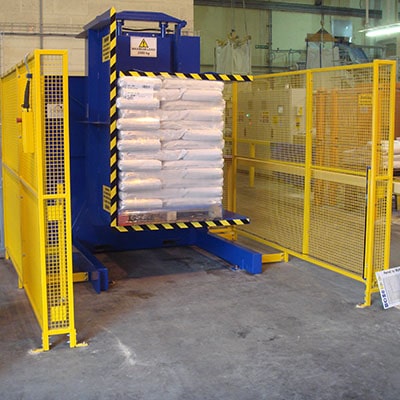
This solution seems simple, but choosing the right machine is extremely important. The wrong equipment can create new headaches instead of solving old ones. It's not just about buying a piece of machinery. It's about implementing a safer, more reliable process. So, let’s look closer at the specific challenges of handling hazardous materials. We will see why a dedicated machine is a vital investment for your operation.
Why is manual handling of hazardous pallets a significant risk?
You probably trust your team to be careful and follow procedures. But the physical work of moving heavy fuel containers from one pallet to another is risky. It's a repetitive task that causes fatigue. And when people get tired, they can make mistakes. For a task with such high stakes, even a small error can lead to big problems. The risks are not just about safety, but also about the hidden costs that follow an incident. A single dropped container can mean thousands of dollars in lost product, cleanup services, and fines. If a worker gets hurt, you face downtime, higher insurance costs, and a negative impact on team morale. This constant, low-level risk adds a layer of stress to your entire operation. By investing in the right equipment, you can automate this dangerous task. This takes the human element of risk out of the equation and gives you valuable peace of mind.
Manual handling of hazardous pallets creates major risks in three key areas. First is worker injury from lifting heavy, awkward loads. Second is product damage and costly spills from accidental drops. Third is the high chance of environmental contamination and failing to meet safety regulations. These risks result in direct financial losses, legal penalties, and higher operating costs.
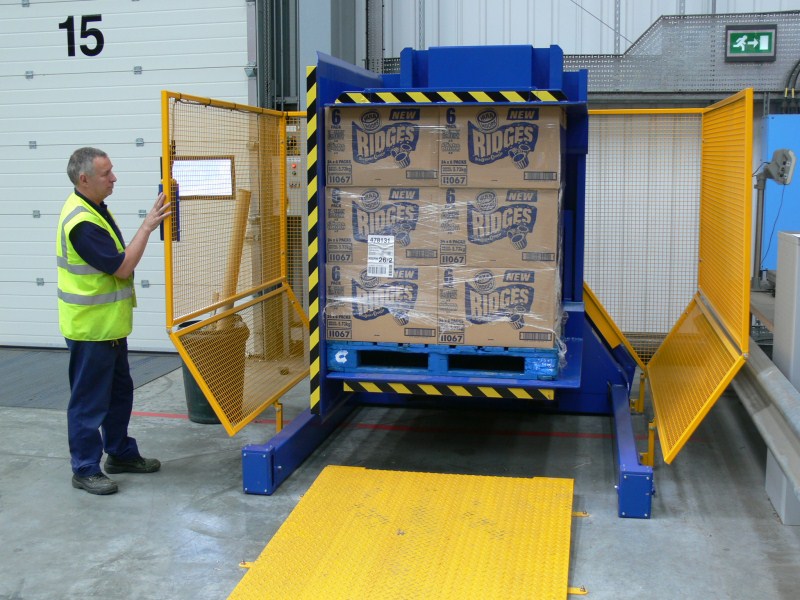
The Hidden Costs of Manual Methods
Many managers think they are saving money by sticking with manual handling. I understand this thinking. A new machine is a capital expense. But the true cost of manual handling is often hidden until an accident happens. I have seen this myself. A "minor" incident can quickly add up. You have the direct cost of the lost fuel. Then you have the cost of special cleanup crews, because hazardous spills require certified professionals. You also have the cost of downtime for that part of your facility. And you have the administrative cost of filling out incident reports and dealing with regulatory agencies.
These costs are real. They are not just possibilities. Let's not forget the indirect costs. Your insurance premiums will likely increase after an incident. If the spill is significant, you could face large fines. And there's the damage to your company's reputation. A business owner like Javier Morales knows that a reputation for safety is hard to build but easy to lose. These hidden costs make the "savings" from avoiding new equipment look very small.
Human Factors and Why Errors Happen
We must accept that humans make mistakes. It is not a matter of a good or bad employee. It is a matter of ergonomics and fatigue. Fuel containers are heavy and often have an awkward center of gravity. Asking a person to lift and move them repeatedly is asking for trouble. Repetitive strain injuries, back problems, and muscle tears are common. These injuries don't just happen. They are the predictable result of a flawed process.
Even with two people working together, the risk remains. A moment of poor communication or a slight loss of balance can lead to a dropped load. A forklift moving the pallet might hit a bump or an uneven patch of floor. The vibrations can cause containers to shift and become unstable. An automated system like a pallet inverter removes these variables. It performs the exact same controlled motion every single time. It doesn't get tired. It doesn't get distracted. It simply does the job safely.
Regulatory Compliance and Proof
Government agencies have strict rules for handling hazardous materials. You are required to provide a safe working environment. With manual handling, it is very difficult to prove your process is consistently safe. How do you document a manual lift? How do you guarantee every employee uses the exact same technique every time? It is nearly impossible.
An automated pallet changer provides a clear, documented, and defensible Standard Operating Procedure (SOP). You can show an inspector the machine. You can show them the operating manual. You can show them training logs. The process is standardized. This makes audits much smoother. It also demonstrates that you have taken concrete steps to mitigate risk. In the world of compliance, this documented proof is incredibly valuable. It shifts the conversation from "we hope our people are safe" to "we have engineered a safe process."
| Risk Type | Manual Handling Impact | Automated Handling Mitigation |
|---|---|---|
| Worker Injury | High risk of back strain, slips, and crush injuries. | Eliminates all manual lifting and carrying of heavy loads. |
| Product Spill | High probability due to drops, instability, and human error. | Load is fully secured before movement, preventing any chance of spills. |
| Contamination | Spills can lead to soil or water contamination and costly cleanup. | Controlled transfer process contains the product at all times. |
| Compliance Failure | Difficult to prove process is consistently safe; high risk of fines. | Creates a documented, repeatable, and easily auditable SOP. |
What types of pallet changers are suitable for hazardous materials?
So, you know you need a machine. But when you start looking, you find many different types. There are pallet pushers, tippers, and inverters. The terminology can be confusing. Choosing the wrong type of machine for hazardous fuels can be a costly mistake. It might not even solve your core safety problem. You might worry about making a big investment in a machine that doesn't work for your specific containers. What if the machine is too aggressive and damages the fuel drums? Or what if it doesn't hold them securely enough? These are valid concerns. Let’s clear up the confusion. By understanding the fundamental differences between these machines, you can choose the one that offers the best security and control for your sensitive products.
For hazardous materials, the best options are pallet inverters and pallet changers that use a clamping system. These machines work by first securing the load from both the top and sides with adjustable pressure. Only after the load is secure does the machine tilt or rotate it. This action prevents the product from shifting or falling, which is essential for handling containers of liquid fuel or other unstable goods.
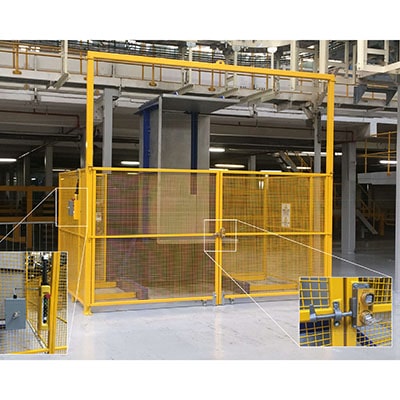
The Pallet Inverter: The Gold Standard for Security
The pallet inverter is, in my professional opinion, the top choice for handling hazardous liquids. The reason is its simple and incredibly secure method of operation. The machine has two platforms, or platens. The load on its original pallet is placed on the bottom platen. The top platen then comes down and applies a controlled amount of pressure to the top of the load. This pressure is adjustable to be gentle enough not to damage your containers, but firm enough to hold everything in place.
Once clamped, the entire load is rotated a full 180 degrees. The original pallet is now on top, and the new pallet, which was placed on the top platen, is now on the bottom. The machine unclamps, and the load rests securely on its new pallet. The old pallet is easily removed. Throughout this entire process, your product is fully enclosed and supported. Gravity is working with the machine, not against it. There is virtually no chance of a container tipping or a load shifting. This is why I recommend it so strongly for liquids.
The Clamp-and-Rotate Exchanger: A Versatile Option
Another suitable option is what I call a clamp-and-rotate exchanger. This machine operates a bit differently. Instead of rotating the load upside down, it clamps the load from the sides. Once the side clamps have a firm grip, the machine lifts the entire load up, clear of the pallet. Then, the original pallet is moved out, and a new pallet is moved into its place. The machine then lowers the load onto the new pallet and releases the clamps.
This method is also very secure and is excellent for boxed solid goods or very stable containers. For hazardous fuel drums, it can be a good solution, but the clamping pressure on the sides must be very precise. You need to ensure the pressure is not so high that it dents or compromises the integrity of the drums. This style of machine is versatile, but for liquids in drums or totes, the full 180-degree inverter often provides that extra margin of safety.
Why Standard Pushers Are Not Recommended
You will also see pusher-style pallet changers on the market. These are often cheaper, and I must warn you against them for this specific application. A pusher works by using a hydraulic or electric gate to literally push the entire load from the old pallet onto a new pallet waiting next to it. This process creates a lot of friction and instability. The load slides across a stationary plate.
For a stack of boxes, this might be acceptable. But for a pallet of hazardous fuel containers, it is far too risky. The containers at the back of the load are pushed by the containers at the front. This can cause drums to tilt, rub against each other, or even fall. The force is not applied evenly across the entire load. This sliding motion is simply not a controlled way to handle something as sensitive as hazardous fuel. The lower price is not worth the immense risk.
| Machine Type | Load Security | Suitability for Liquids | Risk of Product Damage |
|---|---|---|---|
| Pallet Inverter | Highest | Excellent | Very Low |
| Clamp-and-Rotate | High | Good | Low (with proper pressure) |
| Pusher-Style | Low | Not Recommended | High |
How does a pallet inverter enhance safety and compliance?
You need to do more than just improve safety. You need to prove it. You need to satisfy regulators, insurance auditors, and your own internal safety team. Simply buying a machine is not the final step. You need to be able to show that you have implemented a process that is fundamentally safe by design. The thought of an audit can be stressful. You wonder if your current methods will pass a detailed inspection. Can you confidently say that you have taken every reasonable step to prevent a spill or an injury? This is where a pallet inverter truly shines. It provides a clear, logical, and highly defensible safety process. Its basic operation is so secure that it becomes the foundation of your safety program. It simplifies audits and gives you the documented proof of due diligence that business owners like Javier need.
A pallet inverter boosts safety by completely securing the load with adjustable clamps before rotating it. This controlled action eliminates dangerous manual lifting and prevents spills. It improves compliance by creating a repeatable and easy-to-document Standard Operating Procedure (SOP). This SOP provides clear proof that you are meeting and exceeding regulatory safety requirements.
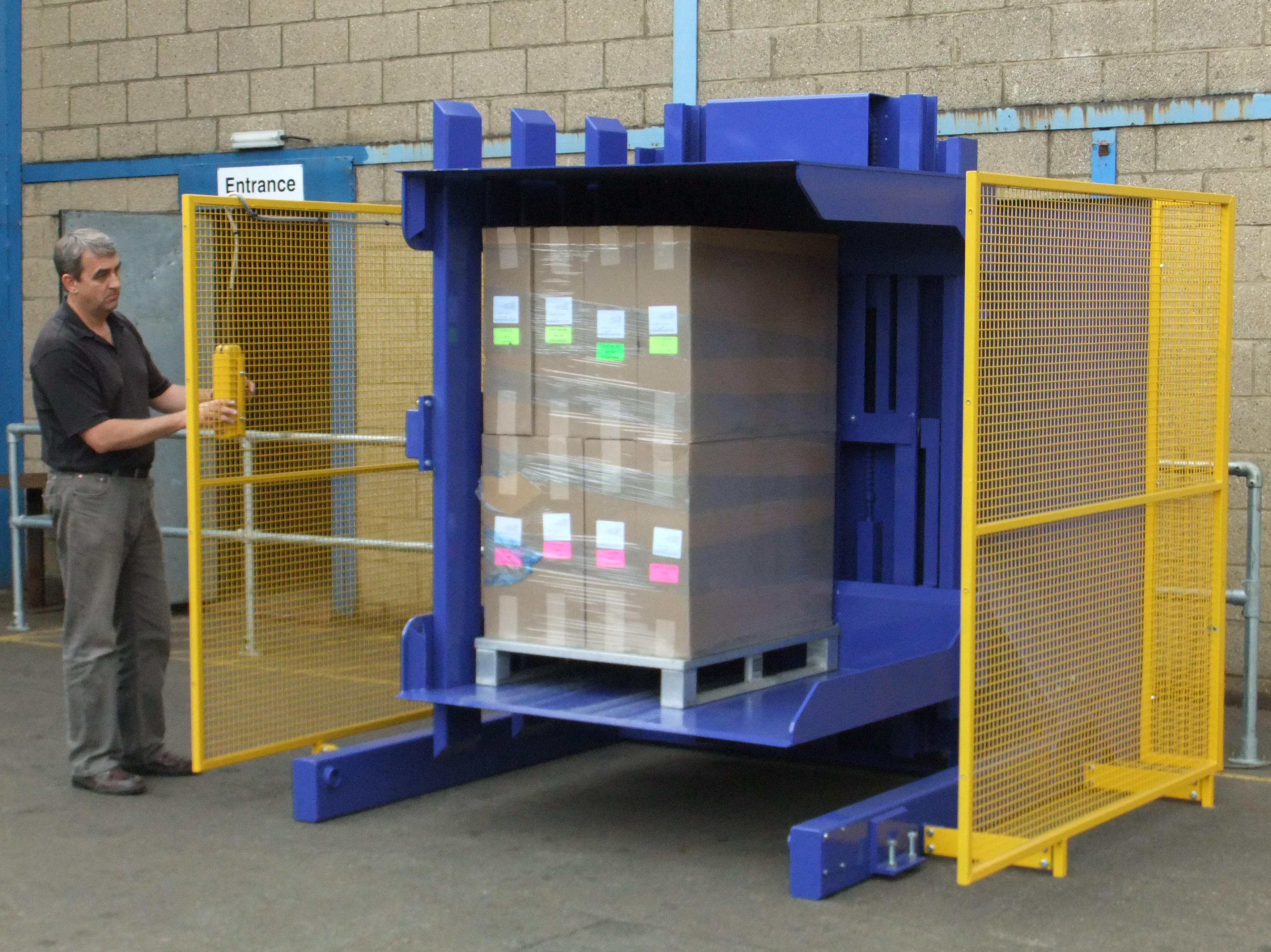
Engineering a Failsafe Process
Let's look at the engineering behind a pallet inverter. The design itself is focused on minimizing risk. It starts with robust hydraulic or electric clamping systems. These systems don't just clamp—they often use pressure sensors to ensure the force is perfect. It's strong enough to hold the load securely but gentle enough to prevent damage to your containers. This removes the guesswork. The operator doesn't have to decide "how tight" to make it. They simply select the pre-programmed setting for that load type.
The 180-degree rotation happens within an enclosed or guarded space. The load is never exposed to an open fall. It is held securely between the two platens for the entire cycle. This design minimizes the number of variables. Unlike a forklift, there's no driver, no steering, and no floor conditions to worry about. Unlike manual lifting, there's no fatigue, no improper technique, and no risk of a slip. By reducing the number of things that can go wrong, you are engineering a safer, more reliable process from the ground up.
Creating a Defensible Standard Operating Procedure (SOP)
With a pallet inverter, your SOP for changing pallets becomes incredibly simple and consistent. It looks something like this:
- Operator loads the pallet into the machine using a forklift.
- Operator places the new pallet on the top platen.
- Operator closes the safety guard and presses the 'start' button.
- The machine automatically clamps, rotates, and unclamps the load.
- Operator opens the guard and removes the load on its new pallet.
This is a simple, trainable, and easily auditable process. You can create a one-page guide with pictures and post it by the machine. Training a new operator takes minutes, not days. When an auditor asks how you handle hazardous pallets, you don't describe a complicated manual procedure. You point to the machine and hand them your simple, clear SOP. This is what compliance looks like in practice. It's about having a system that is so straightforward and safe that it speaks for itself.
Reducing Secondary Risks for a Safer Workplace
The primary benefit is preventing spills. But a pallet inverter also reduces many secondary risks. Think about ergonomic injuries. With the inverter, your team is no longer doing the heavy lifting. This drastically reduces the risk of back injuries and worker compensation claims. Think about noise. A controlled, hydraulic machine is much quieter than pallets being dropped or dragged, or the shouting that can happen during a team lift.
Also consider pallet quality. A pallet inverter handles pallets gently. You will have fewer broken pallets, which means less wood debris on your floor. This makes the workspace cleaner and reduces trip hazards. All these small improvements add up. They contribute to a workplace culture where safety is clearly a top priority. It shows your employees that you are investing in their well-being. This can improve morale and productivity in ways that are hard to measure but are very real.
| Feature | Safety Enhancement | Compliance Impact |
|---|---|---|
| Enclosed 180° Rotation | Completely prevents drops and spills during transfer. | Considered "Best Available Control Technology" by many regulators. |
| Adjustable Clamping | Protects product from damage; ensures a secure grip. | Demonstrates a precise, controlled process, not brute force. |
| Automated Cycle | Removes human error, fatigue, and inconsistency. | Creates a repeatable, documented, and defensible SOP. |
| Ground-Level Loading | Forklift operators can load/unload easily without lifting high. | Reduces risk of forklift-related accidents and improves efficiency. |
My Insight: How to calculate the ROI for a hazardous material pallet changer?
As a business owner, you see the clear safety benefits. But you also have to answer to the numbers on a spreadsheet. A machine like a pallet inverter is a significant capital investment. You need to be able to justify that cost with a solid financial argument. I know this challenge well. In my journey from being an engineer on the factory floor to owning my own packing machine factory, I learned this lesson firsthand. It can be frustrating when you know a machine is the right thing to do, but you struggle to translate the safety and operational benefits into a hard financial projection. The price tag can seem large, and the "soft" benefits like "improved safety" are hard to put a dollar value on. So let me share the practical way I analyze these investments. We will look beyond the initial cost to find the true return.
To calculate the ROI for a hazardous material pallet changer, you must add up all the quantifiable cost savings. These include reduced manual labor costs, the elimination of product loss from spills, lower insurance premiums, and the avoidance of potential fines. You then divide the total cost of the machine by these annual savings to determine the payback period.
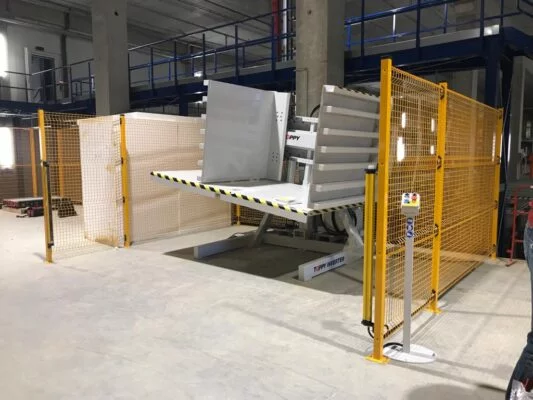
Step 1: Quantify the 'Soft' Costs of Your Current Method
The first step is to make those "soft" costs hard. I remember early in my career, before we had this kind of equipment, we had a single drum of industrial coating get knocked over. No one was hurt, thankfully. But the cost was shocking. We lost the product, which was expensive. We had to pay for a specialized cleanup crew. And we lost half a day of production in that area. That one "minor" accident cost us thousands of dollars.
So, take a realistic look at your own operation.
- Cost of a Spill: What is the value of the product on a typical pallet? What would a cleanup cost? Do not guess. Get a quote from a local environmental services company. Let's say it's $5,000 for a small incident.
- Labor Costs: How many people does it take to change a pallet manually? How long does it take them? Let's say it's 2 people for 10 minutes (20 total minutes of labor). If you change 15 pallets a day, that's 300 minutes, or 5 hours of labor, every single day, just for this one task.
- Insurance: What is your insurance deductible for a workplace injury claim? This is a real cost you would pay.
Step 2: Calculate the Direct and Obvious Savings
This is the easy part. Using the numbers from Step 1, the calculation is simple.
- Labor Savings: 5 hours per day at an average loaded labor rate of $25/hour is $125 per day. Over a 250-day work year, that is $31,250 in direct labor savings. An inverter can be operated by one person in about 2 minutes. The savings are massive and immediate.
- Product Loss Savings: Maybe you lose one pallet of product a year to damage. If that pallet is worth $2,000, that's another $2,000 in savings.
- Pallet Savings: Manual handling and bad forklift work often damage wooden pallets. If you save just 5 pallets a week from damage at $20 each, that's $100 a week, or $5,200 per year.
Just with these simple numbers, you are already looking at nearly $39,000 in annual savings.
Step 3: Factor in Risk Avoidance (The CEO's Perspective)
This is the most important part for a strategic owner like Javier. The savings calculated above are great, but the real win is avoiding a catastrophe. What is the cost of a major incident? A serious environmental spill could result in fines of $50,000, $100,000, or more. A serious worker injury can lead to lawsuits and regulatory shutdowns that cost even more.
A pallet inverter is not just a piece of equipment. It is a form of insurance. You are spending money to remove a significant business risk from your operations. When you present the numbers, you shouldn't just present the payback period based on labor savings. You should present it as a strategic decision to protect the entire business from a major financial and reputational blow. The question changes from "Can we afford this machine?" to "Can we afford the risk of not having this machine?"
| Cost Category | Current Annual Cost (Manual) | New Annual Cost (With Inverter) | Annual Savings |
|---|---|---|---|
| Direct Labor | $31,250 | $4,160 (1 person, 2 min/pallet) | $27,090 |
| Product Loss | $2,000 (estimated) | $0 | $2,000 |
| Damaged Pallets | $5,200 | $520 (estimated 90% reduction) | $4,680 |
| Potential Fine | $50,000 (risk, not annual cost) | $0 (risk eliminated) | Risk Mitigation |
| Total Annual Savings | $33,770 |
If the pallet inverter costs $50,000, the payback period based on direct savings alone is just under 1.5 years. When you factor in the elimination of major risk, the investment becomes one of the smartest decisions you can make.
Conclusion
Investing in the right pallet inverter for hazardous fuels is not a cost. It is a strategic move that protects your people, your product, and your bottom line.


